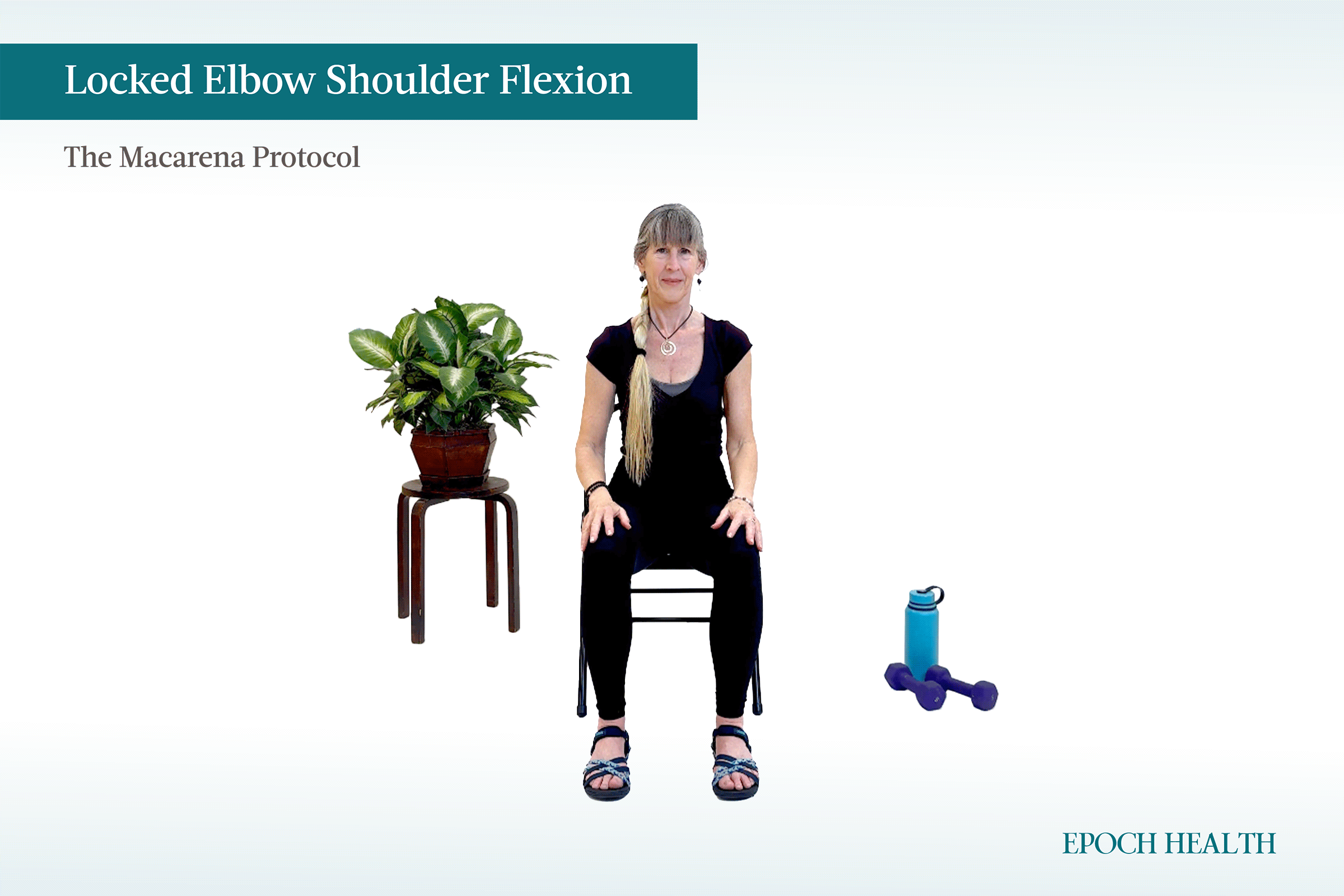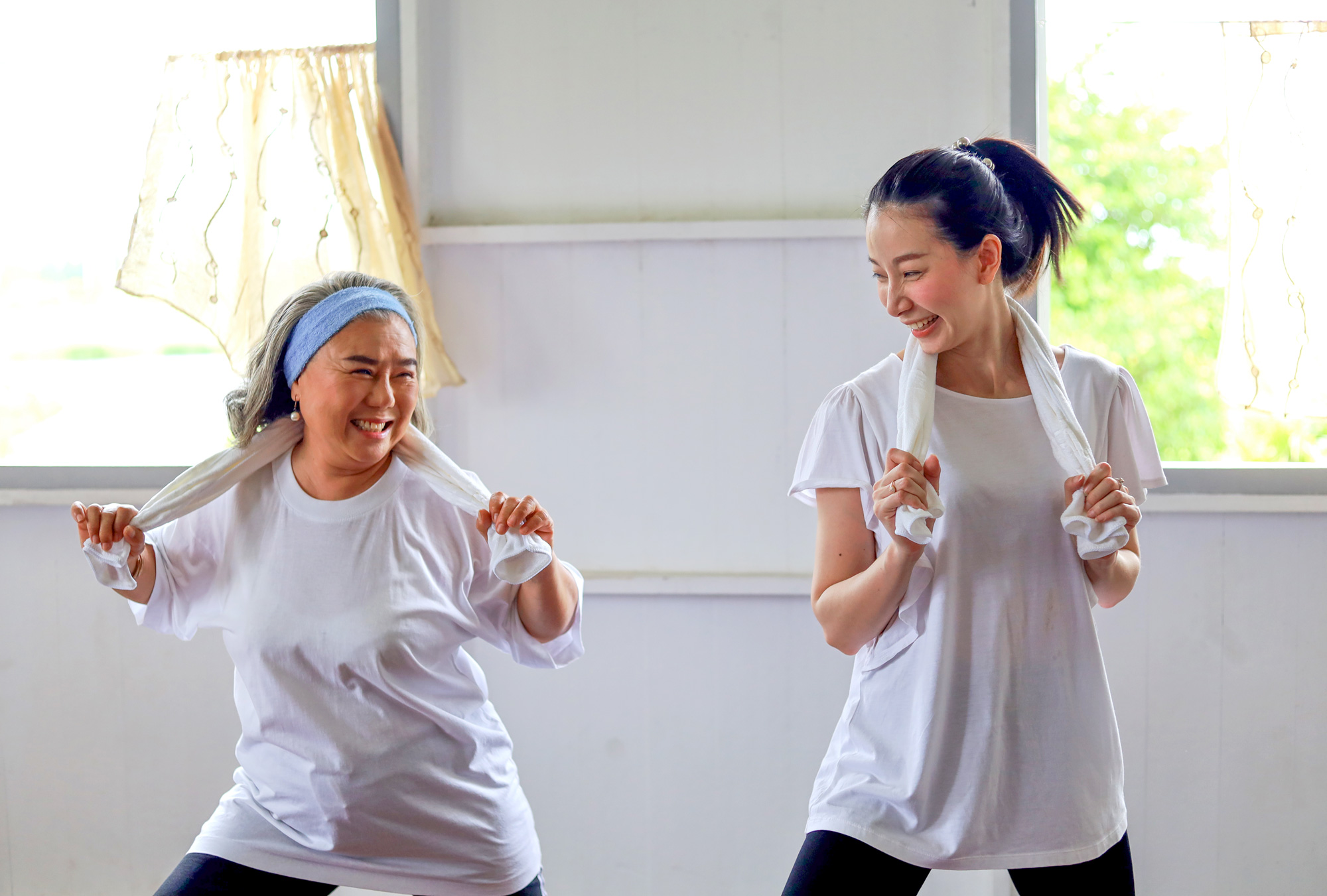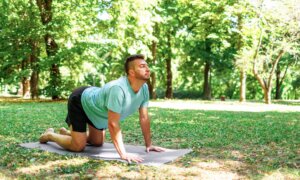Readers of my articles may notice a trend: carefully tailored exercises designed to accomplish a specific purpose. In the exercise world, we refer to these as routines, and in the clinic, we call them protocols. Many different protocols are available to me in the clinic. Still, I favor one above most others—the Macarena protocol—a curated series of exercises designed to target the shoulders for strength and flexibility.
Sage observers (and dancers) will note that the following exercises don’t precisely follow the popular dance moves from the song, but they do derive from it and integrate the active movements of the shoulder and arm. For extra fun, you can perform these movements to music—including the “Macarena.”
These exercises aim to preserve the full range of motion of the shoulder and elbow and maintain strength.
My patients tolerate and enjoy these exercises, but you may wish to talk with your medical provider first to make sure they are right for you.
The Macarena Protocol
Practice Tip: All of the following exercises involve 30 repetitions, which tempts some people to speed up and get sloppy in movement quality. Resist that tendency by performing one repetition per second and paying strict attention to your movements.
1. Elbow Flexion
This is a great starting exercise—easy for almost everyone to perform and universally successful in safely preparing you for the rest of the exercises.
Step 1: Sit or stand with your hands clasped and fingers interlaced. Extend your elbows until they are straight.
Step 2: Slowly bend your elbows and touch your chin with your fingers before lowering your hands back out with your elbows fully extended.
Step 3: Touching your chinny-chin-chin and then moving your hands back out counts as one repetition. Try to perform three sets of 30 repetitions, being sure to control movement speed and task accuracy.
Why I like it: This exercise, though simple, is a great way to warm the joints for further activity.

(Ceridwen Hunter/The Epoch Times)
2. Horizontal Shoulder Flexion
Horizontal shoulder flexion preserves the elbow flexion of the first movement and adds partial shoulder flexion.
Step 1: Sit or stand with your fingers interlaced and place your hands against your sternum.
Step 2: Push straight out from your chest until your elbows straighten.
Step 3: Pull them back against your chest again.
Step 4: Pushing your hands out and then pulling them back in counts as one repetition. Try to perform three sets of 30 repetitions, paying attention to your movement speeds and quality of movement.
Modification: Push your hands forward and back from tummy level to make it easier.
Challenge Time: Move your arms forward and back from shoulder height.
Why I like it: This exercise works on your shoulder joints and muscles while revisiting elbow flexion and extension, warming them up for the next exercise in the protocol.

(Ceridwen Hunter/The Epoch Times)
3. Locked Elbow Shoulder Flexion
Now that your shoulders are warmed up, let’s try an exercise that more directly challenges them. Locking the elbow for this exercise places all effort on your shoulders in a good way.
Step 1: Sit or stand with your fingers interlaced and extend your elbows until your arms are straight.
Step 2: Slowly swing your arms up while keeping your elbows straight until your arms are straight out in front of you and your hands are at eye level. From here, lower your hands back down to the starting position.
Step 3: Moving your arms straight out and back down counts as one repetition. Try to perform three sets of 30 repetitions.
It’s a simple movement, right? Yes—and a wonderful one.
Modifications: If you can’t move your arms straight out, just move them up as far as you can. If moving your arms straight out is easy, explore slowly raising your arms as high as you can, but don’t push into pain.
Why I like it: This simple exercise focuses on strict shoulder flexion after they’re warmed up. Intact shoulder flexion is worth its weight in gold for overhead reaching and avoiding shoulder pain as you age.

(Ceridwen Hunter/The Epoch Times)
4. Overhead Push
The overhead push is a tricky exercise. It appears easy at first blush but involves pushing straight up against gravity and working your arms above the level of your heart. If there’s any exercise here that will make you short of breath, this is the one. But never fear, you’ve got the dance moves and endurance to handle this.
Step 1: Sit or stand with your fingers interlaced and hold them at the level of your chin.
Step 2: Push your hands straight upward as far as you comfortably can. Avoid pushing them outward and upward—be sure to push them straight up.
Step 3: Lower your hands back down to chin level and repeat.
Step 4: Raising your hands up and then lowering them back down counts as one repetition. Try to perform three sets of 30 repetitions.
Modification: Can’t push all the way up? Just push as far as you can and work to that level. You will either improve over time or at least preserve your current range of motion.
Why I like it: This exercise is superb for shoulder flexion and preserves overhead reaching, which starts becoming challenging as life goes on.

(Ceridwen Hunter/The Epoch Times)
5. Touch Shoulder/Touch Leg
This exercise is a low-stress flirtation with internal and external shoulder rotation, tolerated well by almost all of my patients, and a great way to warm the shoulder joints for the upcoming exercise.
Practice Tip: You can alternate between left and right arms with your sets or perform all repetitions on one side and then the other—which I prefer—but either way is good.
Step 1: Sit with your hands on your knees.
Step 2: Reach up with your right hand and touch your left shoulder before placing it back on your right knee. Keep your elbow up and out when you do so instead of tucking it against your body when you touch your shoulder.
Step 3: Repeat with your left hand, touching your right shoulder and moving it back down to your left knee.
Step 4: Raising a hand to a shoulder and then back down to your knee counts as one repetition. Try to perform three sets of 30 repetitions with each arm.
Modification: If reaching up to the shoulder is too difficult, reach across and touch your opposite arm halfway between your elbow and shoulder.
Why I like it: This exercise is well tolerated by most people, even those with shoulder complications, and provides a great movement alternative to “don’t move it at all.”

(Ceridwen Hunter/The Epoch Times)
6. Touch Head/Touch Back
The touch head/touch back exercise focuses on shoulder external and internal rotation, both exquisitely important movements. Practicing these movements helps preserve your ability to reach behind your head and do things like tucking in shirts and pulling up pants.
Practice Tip: You can perform all repetitions on one side or alternate sides depending on what works best for you.
Step 1: Sit with your hands on your knees.
Step 2: Keeping your shoulders upright, bring your right arm up and touch your hand on the back of your head. Avoid the temptation to lower your head toward your hand. Your hand has to do all of the movement.
Step 3: Move your right hand down behind you and touch your knuckles to the small of your back before returning your hand to your knee. Repeat with your left hand.
Step 4: Touching your head and back and returning your hand to your knee is one repetition. Try to perform three sets of 30 repetitions.
Modification: If touching your back doesn’t work for you, hold your elbows slightly out from your sides while touching your fingertips to your belly button. This still gives you the essential internal rotation while decreasing the stress on your shoulder.
Why I like it: This particular exercise pushes your arms into considerable internal rotation—great for preserving your functional range of motion in all directions.

(Ceridwen Hunter/The Epoch Times)
The Macarena protocol can help maximize and preserve your shoulder range of motion, and it’s easy to perform every day. I recommend doing it at least three times a week and preferably every day if you can. Good luck, and I hope these exercises are of benefit to you.
About the fitness model: Aerowenn Hunter is a health editor and fitness model for The Epoch Times. Vibrant in her 60s, she’s an accredited yoga therapist who has dedicated three decades to teaching yoga.




















